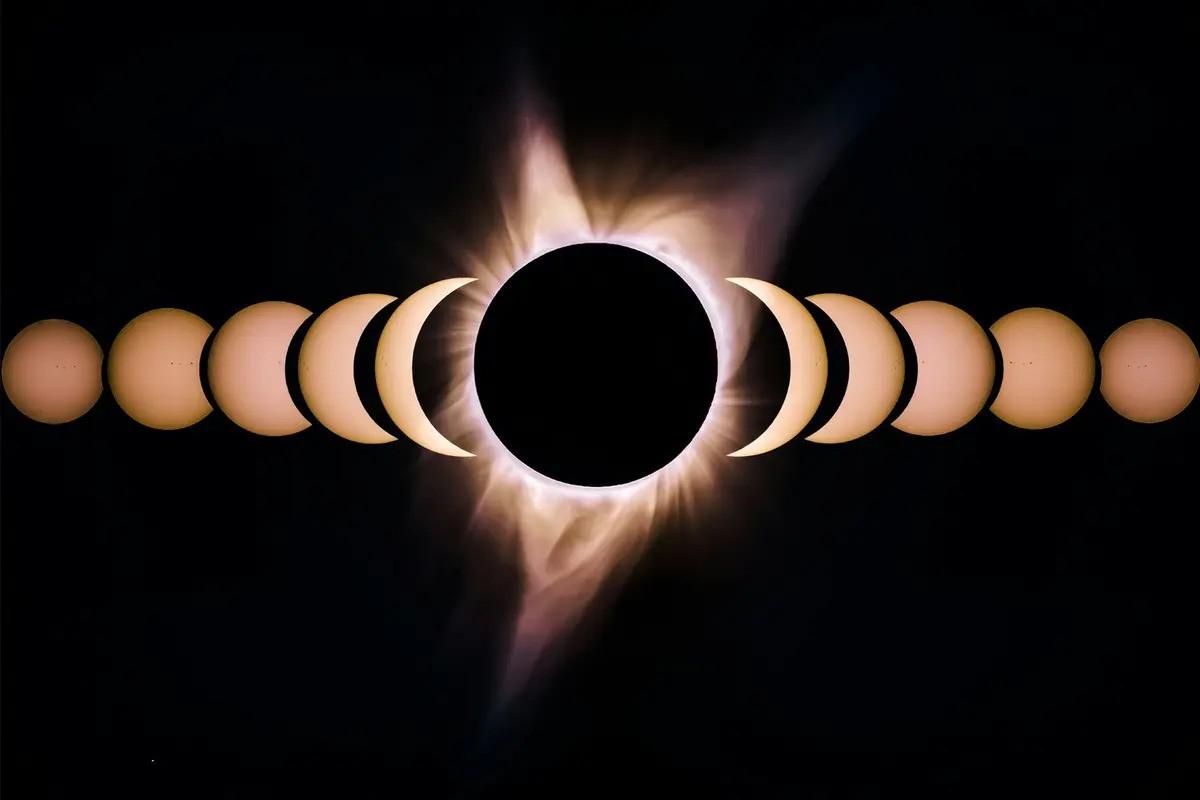On April 8, 2024, inhabitants of the United States, Mexico, and Canada will witness an extraordinary event: a total solar eclipse. This phenomenon occurs when the moon passes between the Earth and the Sun, casting darkness for approximately four minutes and nine seconds. Such an occurrence will not happen again in this area until August 2044. NASA intends to conduct experiments during the eclipse to examine the Sun’s surface and its impact on shadow formation and the Earth’s ionosphere.
1. Safety comes first
For photography enthusiasts and selfie aficionados, a total solar eclipse presents a rare chance to capture remarkable images. However, safety remains of utmost importance. Directly viewing the Sun without proper eye protection can lead to severe eye damage, potentially resulting in permanent retinal scarring.
“The woman’s retinal burns would not heal, Her retina was permanently scarred, a sign of the severity of injuries that can follow looking at an eclipse without proper precautions.” Dr. Avnish Deobhakta, a New York-based ophthalmologist, told the New York Times after diagnosing a young woman who visited the hospital after viewing the eclipse of August 2017.
NASA recommends using top-quality solar viewing or eclipse glasses and applying solar filters to camera lenses. During the period of totality, when the moon fully obstructs the Sun, it is safe to remove the filter to observe the Sun’s corona.
“However, at totality, when the Moon completely blocks the Sun, make sure to remove the filter so you can see the Sun’s outer atmosphere – the corona,” NASA said.
2. All cameras are great for capturing the eclipse
NASA provides photography tips for capturing the eclipse. Contrary to popular belief, expensive equipment isn’t necessary; any camera can suffice. Using a tripod can stabilize the camera and reduce blurriness, while a delayed shutter release can produce clearer images.
Changes in natural light during the eclipse create dramatic landscape transformations, offering opportunities for unique photo stories. Telephoto zoom lenses can capture detailed eclipse activity.
3. Don’t just look up, but also down and around
In addition to capturing the celestial event, photographers are encouraged to document the human experience surrounding the eclipse. Candid shots of people observing the eclipse, along with the changing landscape, can evoke the emotion of the moment. With the eclipse passing over urban areas, there’s ample opportunity to capture diverse human reactions.
“The real pictures are going to be of the people around you pointing, gawking, and watching it,” Ingalls noted. Those are going to be some great moments to capture to show the emotion of the whole thing,” Bill Ingalls, a photographer at NASA, said.
“This is going to be the most populated eclipse in the US, with 31.5 million people able to just walk outside of their homes to experience it,” Kelly Korreck, an eclipse program manager at NASA told BBC.
4. Practice leads to perfect photos
Practice is essential for successful eclipse photography. Experimenting with camera settings and understanding how light changes during an eclipse can improve photo quality. NASA recommends testing settings on the uneclipsed Sun beforehand and adjusting exposure during different stages of the eclipse.
“During totality, the corona has a wide range of brightness, so it’s best to use a fixed aperture and a range of exposures from approximately 1/1000 to 1 second,” the agency further stated.
5. Share and tag @NASA with an open heart
Finally, NASA encourages sharing eclipse images on social media, tagging @NASA. It’s a chance to showcase unique perspectives and contribute to the collective experience of the event. Amidst capturing photos, viewers are reminded to take a moment to experience the eclipse themselves, using protective eyewear.

